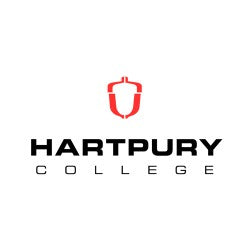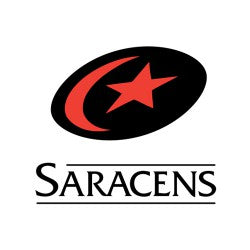School students often compete in multiple sports and are subjected to many different life stressors, these factors can have an impact on their training and game play performance. Investing time and effort into learning emerging training modalities will help not only the development of students, but the development of strength and conditioning coaches. There may be some hesitation to undertake testing due to:
- Limited knowledge
- Logistical difficulties
- Incorrect data
- Suitability concerns
We are going to breakdown why testing is important and how to overcome the barriers.
Let’s start with why these tests are important.
Enhancing Performance: These tests evaluate student’s physiological, biomechanical, and psychological attributes to identify areas for improvement. By pinpointing strengths and weaknesses, you can create targeted training programs to optimise performance.
Preventing Injuries: By identifying biomechanical imbalances, muscular weaknesses, or faulty movement patterns, these tests can help reduce the risk of injuries. Early detection allows students to address these issues through corrective exercises or modifications to their training methods.
Identifying Talent: These tests aid in identifying those students with potential talent in a specific sport. Evaluating various physical factors helps scouts and talent identification programs identify those who possess the necessary attributes for success.
Evaluating Training Programs: Regularly assessing a student’s physical parameters, allows you to evaluate the effectiveness of training programs and make necessary adjustments for optimal progress.
Let’s look at each test and how each piece of equipment can provide feedback, aid programming, enhance testing and allow you to monitor the performance of your students.
What tests should you be performing and what is the best equipment to use?
Speed and Agility Testing
Common tests are usually 20/30m sprint and a 5-0-5 Agility test. In any sport, there needs to be the capacity to sprint, partially recover, and sprint again. Monitoring the development of this ability within your students can be effectively done through the 20/30m straight line sprint test. The 5-0-5 Agility Test is an effective method for assessing change-of-direction abilities. Completing the test typically takes students approximately 2 seconds, making it convenient for large group settings. For this test we recommend the Witty Timing System.
The Witty System is Microgate's portable timing system- the compact size and innovative design makes the Witty Timing System practical and easy to use. Thanks to their brand new ProMove app, combined with the new Bluetooth speed gate, the data is now displayed in the app on you phone in real-time. Making it even easier than before to set up and manage all of your data in one place.
Feedback: Delivering real-time sprint performance and to try and decrease sprint times.
Programming: With the set time your student’s achieved at the beginning of the test, they then have a time to beat moving forward. If speed needs to be improved, then you can tailor their training accordingly to be more power/speed focussed.
Testing: You can see how fast your students are and elicit some friendly competition between them. Also you are able to track improvements over time to see how much faster they may have become.
Monitoring: Track improvements over a year but also identify the potential for over-training or injury if the time gets slower.
Lower-Body Power
The countermovement jump (CMJ) is a widely used and dependable measure of lower-body power due to its simplicity, practicality, validity, and high reliability. Research has consistently demonstrated that the CMJ is the most reliable measure of lower-body power, when compared to other jump tests (Ache Dias, et al. 2011, https://journals.lww.com/nsca-jscr/fulltext/2011/07000/validity_of_two_methods_for_estimation_of_vertical.35.aspx). Additionally, the CMJ has been found to be correlated with sprint performance, maximal strength (as assessed by one-repetition maximum or 1RM), and tests of explosive strength. For this test we recommend the Optojump system.
Optojump is an optical measurement system consisting of 2 bars that create a carpet of infrared beams. The carpet detects any interruptions in communication between the bars and calculates the duration. This makes it possible to measure flight and contact times during the performance of a series of jumps with an accuracy of 1/1000 of a second. Starting from this fundamental basic data, the Optojump software makes it possible to collect the athletes results in real-time.
Feedback: Comes in the form of jump height and flight time but can motivate students to train harder to improve.
Programming: Similar to the Witty system, low jump height scores may mean low power, underlaying injury or poor technique. This would then require an adaptation of training for your students moving forward.
Testing: CMJ looks at lower body power and can be compared throughout the academic year but can also be used in a single leg CMJ to look at asymmetry between each side and see if there is a weakness in one leg. Differences of more than 10% may indicate the potential of injury.
Monitoring: Changes in Jump height can also be an indicator of fatigue throughout the year if the height starts to drop dramatically week by week.
Velocity Based Training
Velocity Based Training (VBT) is a method where we use technology to measure how fast a barbell can be lifted, it can be used for assessing the speed of other explosive movements. Why do we care about speed? Well, research tells us that if we exercise at the right speed with the right amount of weight, we get better results. Monitoring speed helps you to understand when your students are getting tired, and it gives you data to improve their performance. For this we recommend GymAware.
The GymAware RS is a small, portable, and accurate linear encoder which attaches to free weights bars and weight stack machines for measuring power output. Using an iPad, the GymAware RS records data through their app and displays real-time results. GymAware data can be securely accessed online anywhere, any time.
The GymAware FLEX is an entry level alternative to the GymAware RS. The FLEX device attaches to the end of your barbell and automatically tracks each and every rep via their mobile app, which is available on android and iOS devices.
Feedback: Delivering feedback on the speed of movement to help maximise every rep.
Programming: With feedback on the speed of lifts and any changes/drop in the speed, this allows you to change the weight your students are lifting as needed. Any loss of speed can signal the end of that training session.
Testing: Using the speed of the lifts to help plan what weights your athletes should be lifting. Using lighter loads, you can even work out what is their maxi lift (using an accurate estimate of their 1 Repetition Maximum (1RM)).
Monitoring: Oversee changes in speed between sessions and comparing them to the target speed to see whether your students are lifting too much.
Conclusion
In conclusion, testing plays a pivotal role in the athletic development of school students participating in various sports.
By utilising specific tests and associated equipment such as the Witty Timing System, Optojump system, and GymAware, educators and coaches can provide real-time feedback, tailor programming, conduct effective testing, and monitor progress, ultimately contributing to the holistic development and success of student athletes.
Embracing testing as an integral part of athletic training will undoubtedly pave the way for a brighter and more efficient future in sports performance and athlete development.
Want to find out more, we have an inhouse sports scientist who is on hand to answer any questions or discuss how you can implement the equipment into your school. Contact us today for more information.
Join us on our upcoming School Summit, a day filled with invaluable insights and learnings from a distinguished line-up of speakers. Including a world-class performance coach and VBT expert Chris Tombs, Gold Medalist and international athlete Shona McCallin, University of Brighton Lead S&C Will Ruscombe-King, and even trying the testing out for yourselves! All of this is taking place on Tuesday 5th December at St. George’s Park. Sign up for this free event by clicking here.


































